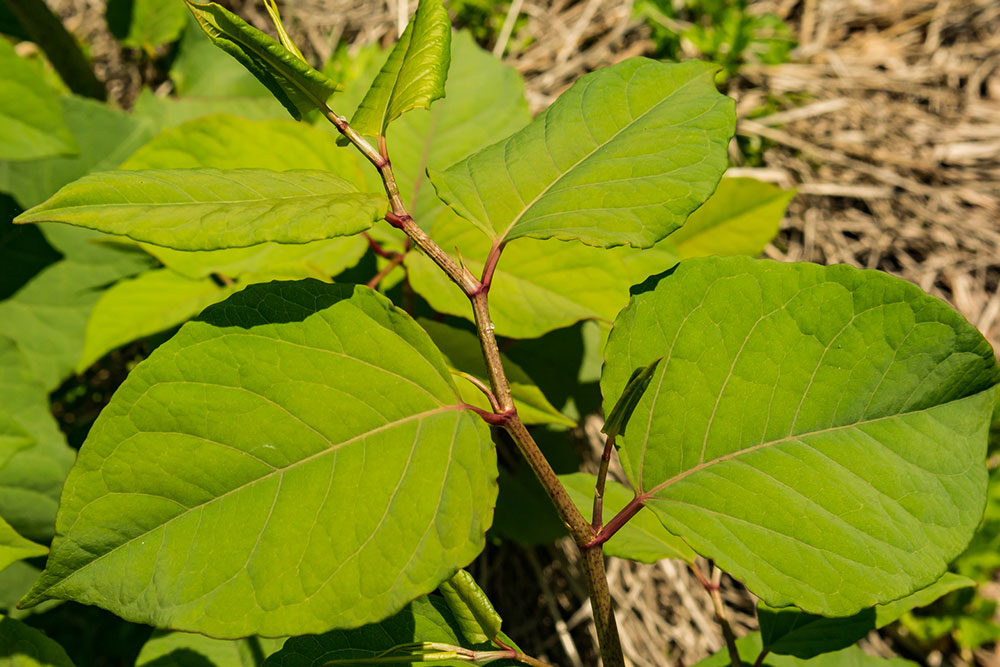4 Ways to Permanently Get Rid of Knotweed
Knotweed is one of the most invasive weed species, and permanently removing it can be challenging. But it is important to eradicate it as it can wreak havoc on landscapes, lawns, gardens, and sometimes even the foundation of a structure. It’s hardy and strong, and its roots can reach a depth of 10 feet. Knowing how to eliminate knotweed is one half of the battle; the other half is patience and persistence.
1. Smothering
As odd as this process sounds, it is one of the first ways of knotweed treatment. Knotweed cannot be simply pruned or uprooted and thrown away.

Cut or prune the mature stems down to their base and remove any debris from the area to prevent it from reoccurring. Cover the entire area with mulch, grass, or plant clippings. Now lay a thick, dark-colored tarp over it. The mulch and grass are to prevent the freshly pruned stems from tearing into the tarp. It makes good sense to extend the tarp a bit beyond the limit of the knotweed so every chance of it growing is thwarted.
Japanese knotweed is often called Godzilla weed due to its aggressive growth. So, the chances of new shoots pushing up the tarp as it tries to grow are high. Just walk all over the tarp, pushing the shoots back down, and make sure to patch any holes in the tarp. The idea here is not to allow sunlight through the tarp to aid healthy growth.
After a few years of consistently keeping this area covered and “flat,” so to speak, the Japanese knotweed would have been killed permanently.
2. Cutting
Like smothering, this method can take a long time, but it can be done successfully only if one is consistent. Cutting suppresses knotweed and must be used with other methods for the best results. The first step is to chop the weed down close to the ground in its growing season so it cannot effectively photosynthesize. Even a small cutting can take root in the soil, and every small bit must be cleaned up, bagged, and disposed of properly. Now begins the consistency part. The area must be inspected weekly, and any new shoot must be pruned immediately. Now, the tricky part here is that cutting stimulates the knotweed to grow, and one must not start cutting new shoots until and unless they are committed to following up regularly. Without regular and diligent pruning of new shoots, one may end up with an even more serious problem than when they began. Mowing is not advised because it could transport tiny fragments of propagation to different parts of the yard or garden, creating even more growth.
3. Excavation
This is what it sounds like – digging up the plant and its roots, usually with the help of heavy machinery. This method is faster than smothering, but the downside is that it is expensive and can destroy more of the lawn space in the process. Excavation is not advisable if the affected areas are very large. This is because entirely removing every trace of knotweed can be difficult. Complete removal is essential because even half an inch of stem or root can grow into a new plant. Besides, transporting invasive plant material and so much of it can be quite risky.
For smaller areas affected by knotweed, one way to excavate is to dig up the ground where the shoots come up. This weed grows horizontally underground, so its rhizomes have to be dug up and destroyed.
4. Chemical control
Sometimes, the infestation can be so severe that chemical intervention becomes necessary. Spraying a glyphosate-based solution on the leaves and foliage of the knotweed is the most effective way to eliminate it. Care must be taken to focus only on the weed, as any other plants that come into contact with this solution could die. It’s always safer to contact a professional and allow them to handle all chemical control of the weed if this action becomes necessary.
How to identify Japanese knotweed
Japanese knotweed has creamy white flowers, bamboo-like hollow stems, and heart-shaped or shovel-shaped leaves. The green stems, which can grow to an astonishing two centimeters a day, have a zig-zag pattern with purple and red specks. The leaves, too, are light green with red or purple specks. A few plants look alarmingly like Japanese knotweed and could be mistaken for it.
- Houttuynia
- Ornamental Bistorts
- Lesser Knotweed
- Himalayan Balsam
- Broadleaved Dock
- Bindweed
- Himalayan Honeysuckle
- Russian Vine
- Horsetail
- Buckwheat
- Ground Elder
- Ivy
- Giant Fleece Flower
- Buddleia
- Dogwood
- Lilac
- Red Valerian
